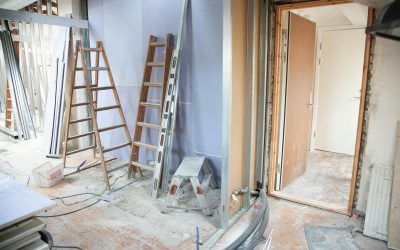Who is Eligible for a Government Home Improvement Grant In California?
Home improvement grants serve as an essential source of financial assistance for homeowners seeking to finance necessary repairs or upgrades to their current residence before commencing the buying process for their next home. These grants, often referred to as home repair grants, are distributed by different entities such as the federal government, state governments, or local municipality agencies. The primary purpose of these grants is to help alleviate the burden of the substantial expenses that often accompany home upgrades or renovations, making it easier for homeowners to maintain and enhance their properties.
Not all home improvement projects are eligible for these grants; however, for those that do qualify, these financial aid solutions can provide a valuable resource to cover costs associated with property enhancements. Homeowners can access funds to undertake desired improvements that may increase the value, safety, and overall appeal of their homes. By leveraging home improvement grants, individuals can potentially save thousands of dollars on renovation expenses, transforming their properties while minimizing out-of-pocket costs. This financial assistance can be a game-changer for many homeowners, offering them the means to make necessary repairs and improvements to their homes without derailing their plans for future real estate ventures.
The following enumerates the home improvement grant options accessible to residents in California:
| Program | Description |
| 1.Weatherization Assistance Program (WAP) | The Weatherization Assistance Program is a federally funded initiative that aims to help low-income households improve their energy efficiency, reduce energy costs, and create a more comfortable living environment. The program targets vulnerable households, including families with children, elderly residents, and people with disabilities. Qualified homeowners can receive free energy audits, insulation, weatherstripping, caulking, and other energy-saving home improvements. WAP is administered at the state level by the California Department of Community Services and Development. To qualify, households typically need to have an income at or below 200% of the federal poverty level. However, priority is given to households with elderly residents, people with disabilities, and families with young children. |
| 2. Low-Income Home Energy Assistance Program (LIHEAP) | LIHEAP is another federal program that provides financial assistance to low-income households to help them manage their energy bills and improve their homes’ energy efficiency. The program offers two main types of assistance: bill payment assistance and weatherization services. Bill payment assistance helps eligible households cover their energy costs, while weatherization services focus on energy-saving home improvements like insulation and sealing air leaks. In California, LIHEAP is administered through the Department of Community Services and Development. To be eligible, households must have an income at or below 60% of the state median income level. |
| 3. California Solar Initiative (CSI) | The California Solar Initiative is a state-funded program that promotes the adoption of solar energy systems by providing rebates and incentives to homeowners who install photovoltaic (PV) systems on their properties. The program is overseen by the California Public Utilities Commission and is implemented by the state’s three largest investor-owned utilities: Pacific Gas & Electric, Southern California Edison, and San Diego Gas & Electric. The CSI program consists of several sub-programs, including the General Market Program, the Single-Family Affordable Solar Homes (SASH) Program, and the Multi-Family Affordable Solar Housing (MASH) Program. Rebates and incentives are based on the size and performance of the installed solar systems. |
| 4. Property Assessed Clean Energy (PACE) Financing | PACE programs provide financing for energy-efficient and renewable energy home improvements, allowing homeowners to make upgrades without the need for a large upfront payment. The cost of the improvements is repaid through a voluntary assessment on the homeowner’s property tax bill, often over a period of 5-25 years. PACE financing can be used for a variety of projects, including solar panels, energy-efficient windows, and heating and cooling systems. PACE programs are typically administered at the local level by cities, counties, or other government entities. To qualify, homeowners must have a good payment history for property taxes and mortgage, and the home must have sufficient equity to support the additional assessment. |
| 5. Energy Upgrade California | Energy Upgrade California is a statewide initiative that offers rebates and incentives for homeowners making energy-efficient home improvements. The program is designed to help Californians save energy and reduce their environmental impact. Homeowners can receive up to $5,500 in rebates for energy-saving home upgrades, such as insulation, HVAC systems, windows, and solar water heaters. The program is administered by local utilities and requires participants to work with approved contractors. The amount of the rebate depends on the type and number of improvements made, as well as the overall energy savings achieved. |
| 6. Single-Family Affordable Solar Homes (SASH) Program | The SASH program is designed to help low-income families in California adopt solar energy by providing financial incentives for solar installations on qualifying single-family homes. The program is part of the California Solar Initiative and is administered by the nonprofit organization GRID Alternatives. To be eligible for the program, homeowners must have a household income at or below 80% of the area median income, and the home must be classified as “affordable housing” as defined by the California Public Utilities Commission. The program provides financial incentives based on the size and expected performance of the solar energy system. In addition to the financial incentives, GRID Alternatives also offers no-cost solar installations to qualifying families through its volunteer and job training programs. |
| 7. Multi-Family Affordable Solar Housing (MASH) Program | Similar to the SASH program, the MASH program offers financial incentives for solar installations on qualifying multi-family affordable housing properties in California. The program is also part of the California Solar Initiative and is administered by the state’s three largest investor-owned utilities: Pacific Gas & Electric, Southern California Edison, and San Diego Gas & Electric. MASH provides two types of incentives: one for solar energy systems that offset common area energy usage and another for systems that offset tenant energy usage. To qualify, the multi-family housing property must meet the California Public Utilities Commission’s definition of affordable housing. The financial incentives are based on the size and expected performance of the solar energy system, with a goal to provide benefits to both property owners and tenants. |
| 8. Home Energy Renovation Opportunity (HERO) Program | The HERO Program is a financing program that enables homeowners to make energy-efficient and renewable energy upgrades to their homes, with repayment through property taxes. It is a type of Property Assessed Clean Energy (PACE) financing program, and it is available to homeowners in participating cities and counties throughout California. HERO financing can be used for a wide range of energy-saving home improvements, including solar panels, energy-efficient windows, heating and cooling systems, insulation, and water-saving landscaping. The program offers competitive interest rates and repayment terms of up to 25 years, depending on the type of improvement. To qualify, homeowners must have a good payment history for property taxes and mortgage, and the home must have sufficient equity to support the additional assessment. The program requires the use of approved contractors to ensure that the improvements are properly installed and meet energy efficiency standards. |





